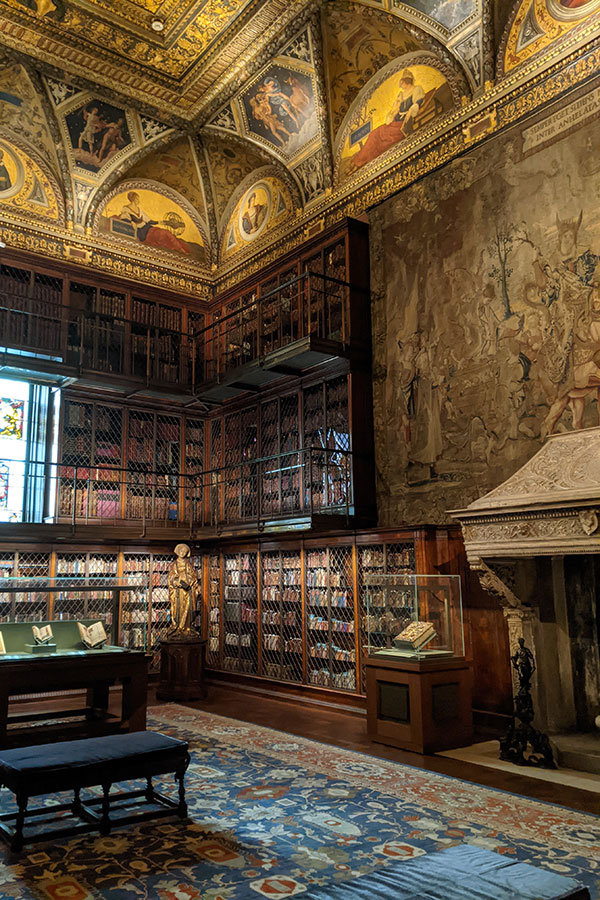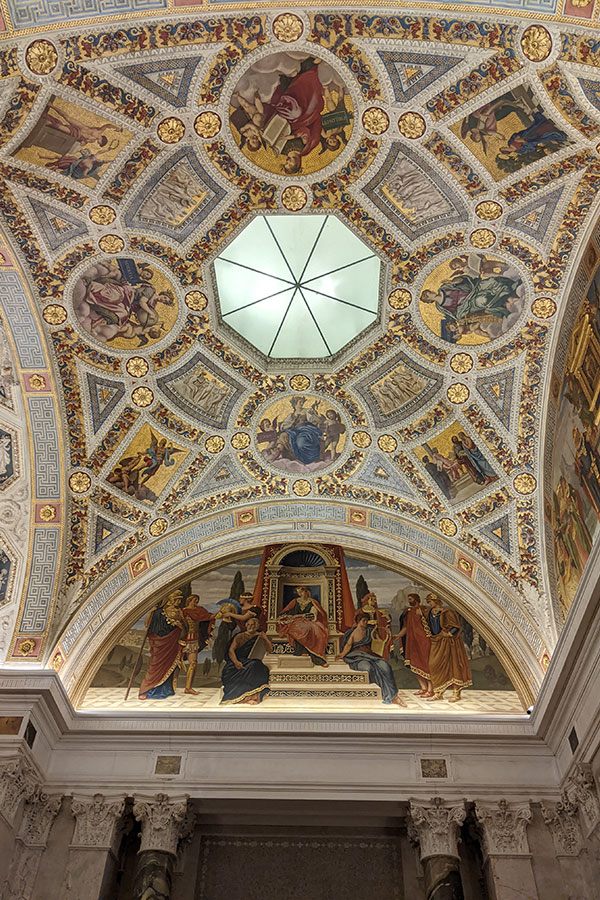In New York City, there is no shortage of museums and attractions. And while many of the city’s museums have a historic background, there are only a few with direct ties to the New York City of yesteryear. The Morgan Library & Museum is not only an important part of history being that it was built for J.P. Morgan. It is also a library that will cause true envy in the heart of bookworms and architecture enthusiasts.
In addition to being J.P. Morgan’s private library, the museum is home to an exhibition space for a number of fascinating rotating exhibits.
Like the Frick Collection, there are few Gilded Age landmarks still standing. And even fewer that still resemble something similar to what was originally intended. And although it can be overshadowed by the city’s many attractions and those museums uptown along Museum Mile, The Morgan Library is one of those rare spots and fun museums in NYC that you will want to make time for.
Brief History
Around the turn of the century, J. P. Morgan decided he needed a dedicated building to house his collection of books, prints, drawings, and more. Roughly two decades earlier, he had begun collecting items that ranged from rare, historical books to old master drawings. At the time, he had simply been housing the growing collection in his basement.
Morgan purchased a property on Madison Avenue. The building was, conveniently, adjacent to his home. Architect Charles McKim of McKim, Mead & White designed the building which took four years to complete.
Needless to say, the resulting building was quite remarkable. Designed in the Italian Renaissance palazzo style, the building was constructed of marble at Morgan’s request. It was made up of a mere three rooms: Morgan’s private study, an office for his librarian (the accomplished Belle da Costa Greene, an African-American who passed as white for much of her adult life), and the library itself. An indulgent rotunda serves as a central point between the three distinct rooms.
Experience
The Morgan Library & Museum that visitors experience today is not quite the same as the one J. P. Morgan would have enjoyed. For one thing, the footprint today is noticeably larger. Likewise, the entrance to the library has been relocated to a new lobby that leads to the original historic building.
In 1924, J. P. Morgan’s son, J. P. Morgan, Jr., created the library as a public institution. Since that time, there have been changes to the original library. Today there is additional gallery space as well as typical museum offerings like a gift shop and cafe.
The Library
Tucked off the Gilbert Court not far from the lobby, is an unassuming door. Visitors pass through this door and enter not just the library but a different era. The bright and modern lobby is behind you and ahead is the library is dark with rich, heavy decorations.
J. P. Morgan’s study sits closest to the entrance. A massive fireplace dominates an entire wall while a handsome portrait of the library’s namesake hangs above. His large and elaborate wooden desk sits opposite the fireplace.
The ceiling is covered in thick wooden panels and a deep, dark red fabric covers the walls. Although quite dark, there are a few windows in the room and they feature special stained glass panels.
The walls are lined with shelf after shelf of books as well as some more paintings and works of art. Just off the study is a small walk-in vault where Morgan kept the most valuable and rare books and works from the collection.
Similar in style and decoration to Morgan’s office is the library. The three-story room features walls that are covered with books and a seemingly delicate walkway structure for accessing the books in the furthest reaches. Opposite the entrance, the wall is dominated by a large tapestry that hangs over a still rather large fireplace. And the icing on the cake, so to speak, is the golden works of art that cover the ceiling. Important historic figures are depicted across it, including Socrates and Galileo.
On the shelves, Morgan seems to have a copy of every book imaginable. And in a number of languages, too. While visitors are not able to access the upper tiers, you can crane your neck to take in all of the volumes and imagine what lies between those colorful covers.
In comparison to Morgan’s study and the library, the rotunda that connects them is bright. The light dances off of marble-lined walls and floor. It catches the tiniest of details in the mosaics that decorate the ceiling. There are even stucco reliefs and paintings that are inspired by those created by Raphael at the Vatican.
The Museum Galleries
While the Morgan Library is the namesake attraction, the museum is not to be overlooked. The gallery space offers a chance for the museum to host various exhibitions.
During my most recent visit, for example, among the exhibits on display was Holbein: Capturing Character, an impressive show on Hans Holbein the Younger that was curated with works from around the world. The galleries are not huge but the works on display are numerous and of high quality, telling a compelling and well-rounded story.
Getting There
The Morgan Library and Museum are located on the corner of Madison Avenue and East 37th Street.
There is no on-site parking but there are nearby parking lots. The closest subway stops are 33rd Street, Herald Square, and Grand Central Station.
Save this post on the Morgan Library & Museum for later on Pinterest!
All photos, as well as opinions, are my own.




